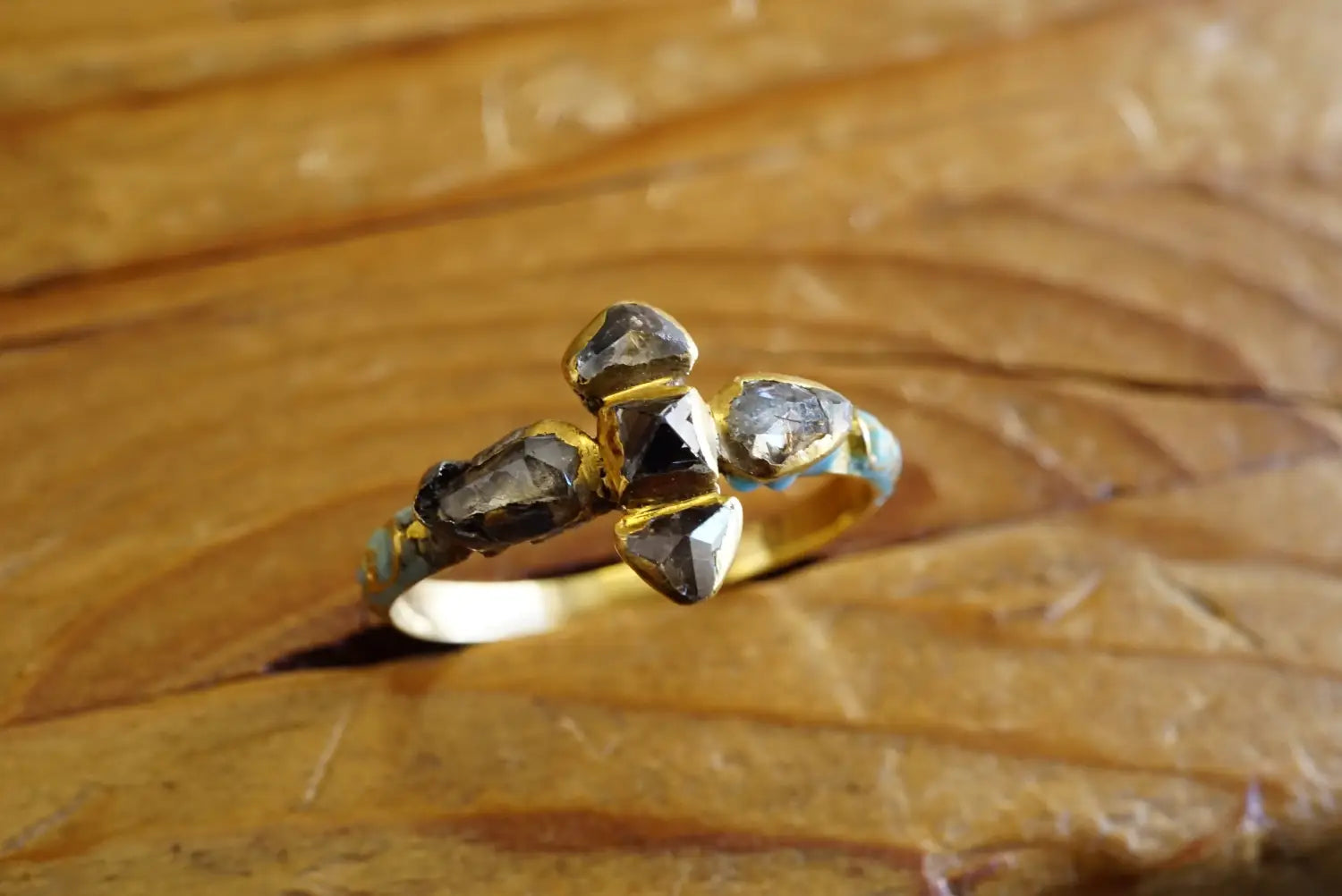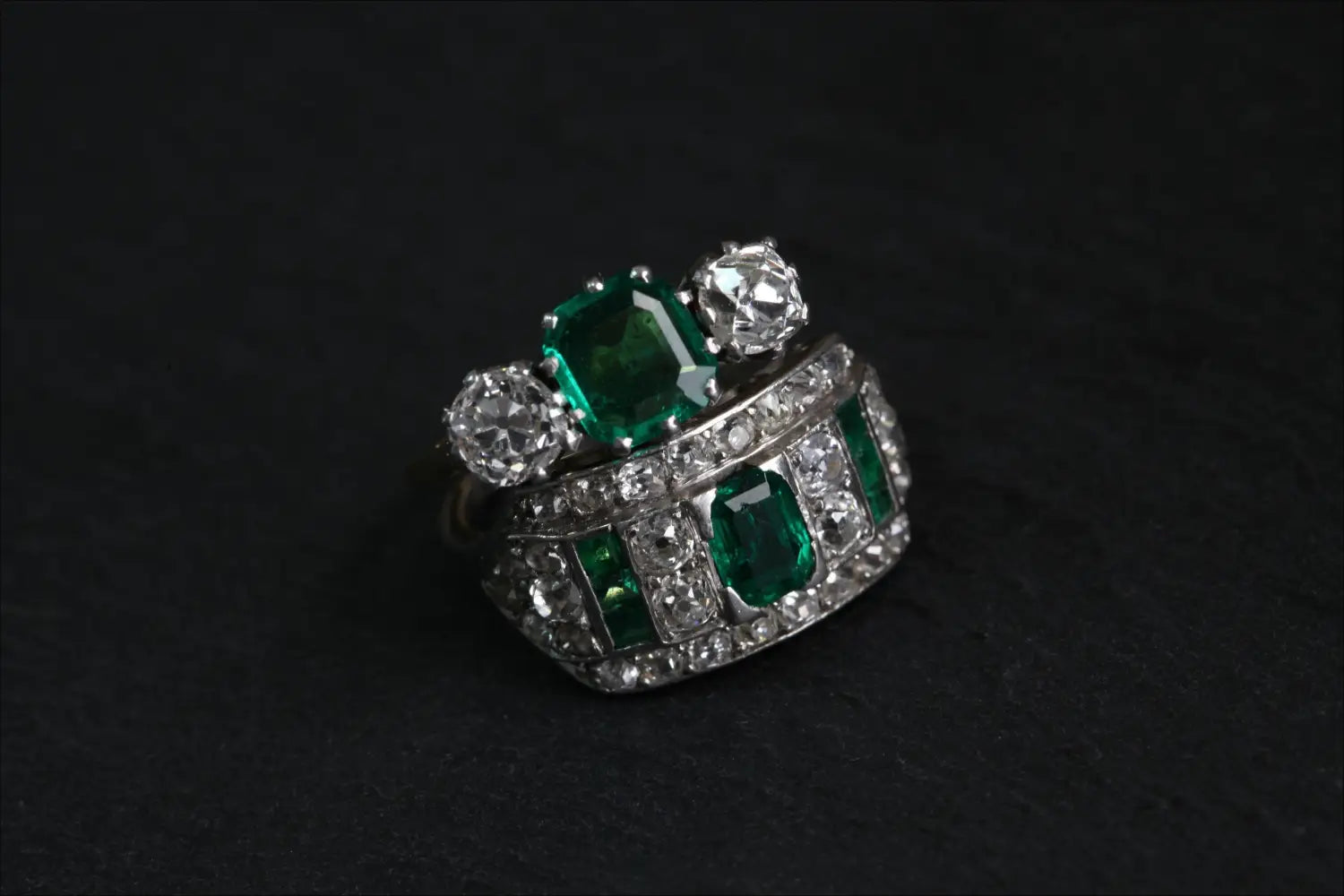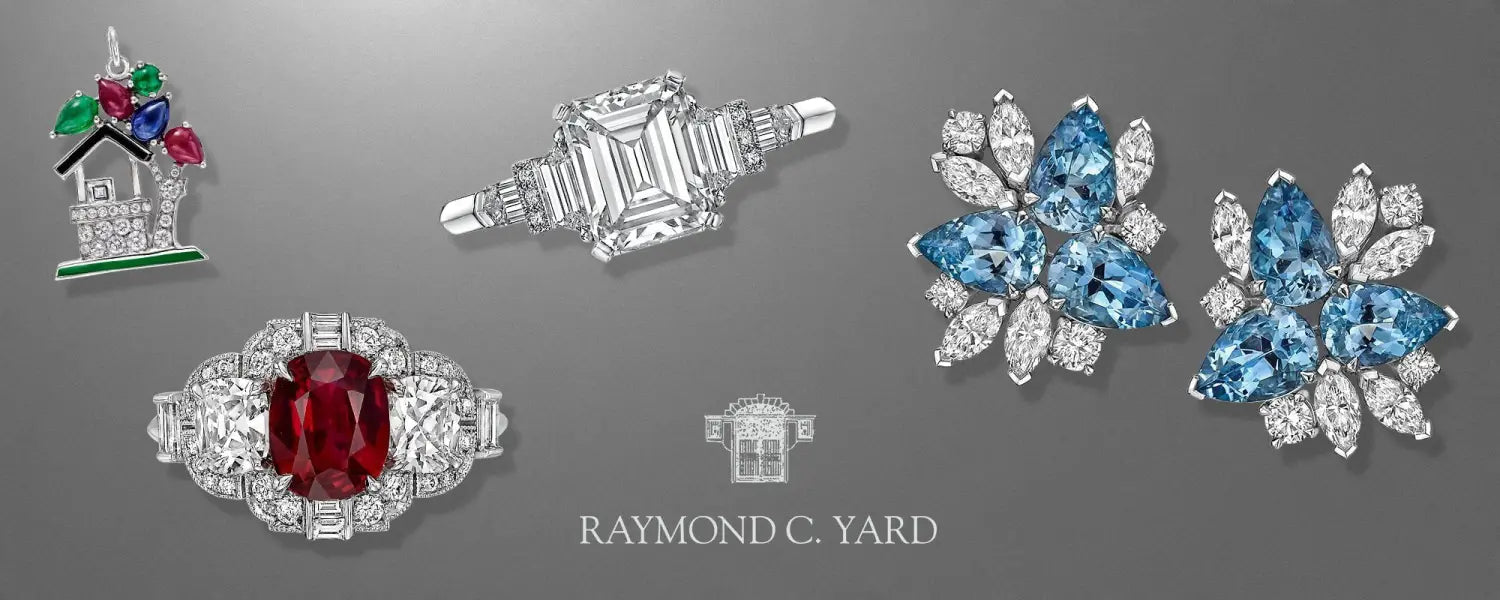
The Point Cut: The Antique 'Diamond Cut' That Started Them All
Since their discovery centuries ago deep within the Earth, diamonds have held a special fascination for many. A unique combination of chemical composition, crystal structure, and formation process makes diamonds extraordinary, while their brightness, sparkle, fire, and sense of purity are unmatched by any other gem.
The earliest admirers of diamonds were in ancient India, where historical records suggest diamonds were first used around the 4th century B.C. These early diamonds, however, were not the faceted stones we treasure today, as modern diamond-cutting tools and techniques had not yet been invented. Instead, these were gem-quality diamonds in their natural crystal form.
In their natural crystal form, diamonds most commonly appear as eight-sided octahedrons, which resemble the traditional diamond shape in three-dimensional form, or like two pyramids joined at their bases. Another common diamond-crystal shape is the twelve-sided dodecahedron, often said to symbolize the universe.

Natural octahedral diamond crystal from South Africa. Photo by Robert Weldon/GIA.
Natural diamond crystals in well-formed octahedral and dodecahedral shapes, known as “natural points,” were highly revered in ancient India for their powerful forms and the belief that they possessed great mystical powers. Ancient Romans also valued these natural points, particularly as focal points in rings, where they were set with a point facing upward. Other civilizations followed suit in appreciation of these shapes.
While often referred to as “point-cut diamonds,” this term is technically a misnomer, as no actual cutting is involved to create these shapes, other than removing any residue from where the diamonds were mined. These diamond crystals naturally occur as perfect (or near-perfect) octahedrons or dodecahedrons.
In contrast, many natural diamond crystals do not form perfect shapes and often have asymmetrical sides and flawed surfaces. Once early lapidary artists discovered that diamonds could be shaped to enhance their beauty by using other diamonds, they started modifying these irregular crystals to resemble the ideal point-cut diamonds.

Natural octahedral diamond crystal (top) weighing 15.98 carats. Photo by Robert Weldon/GIA.
For instance, irregularly shaped octahedral crystals were reshaped using a technique known as the “pyramidal point cut.” Lapidaries introduced symmetry to these stones by grinding off material and smoothing surfaces. At the same time, they would preserve the stone’s widest area, or girdle, as this circumferential region influences a diamond’s perceived size. Due to the high hardness of diamonds along their natural octahedral faces, grinding had to be done at angles that made the natural points shallower, resulting in diamonds with a lower apex and a broader, more squat pyramid shape.
Similarly, irregularly shaped dodecahedral crystals were adjusted by polishing their faces. The preferred look featured four of the stone’s 12 sides facing upwards as if rising upwards to form a peak, which became known as the “Burgundian point cut.”
The goal of these modifications was to create point-cut diamonds that appeared as natural and untouched by man as possible, as anything less was believed to diminish a diamond’s mystical powers. As this belief waned over time, it paved the way for more intricate diamond cuts such as the table cut, a precursor to many modern diamond cuts.
Despite the evolution of diamond-cutting techniques, antique point-cut diamonds, pyramidal point-cut diamonds, and Burgundian point-cut diamonds, with their primitive shapes, smooth, frosted, or irregular surfaces, and subtle twinkle, possess a raw, otherworldly beauty. They carry an aura of mystery and historical significance that continues to captivate many modern jewelry collectors.
Photo: From the Jogani collection, a Renaissance-period ring featuring a point-cut diamond at its center.


